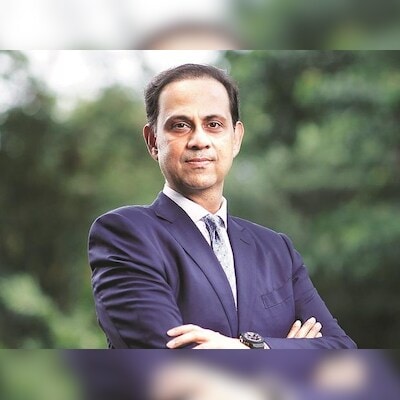Sanjiv Bajaj stressed that India needs a much wider spread of financial services.
Banks are not in a position to lend for long-term projects and their funding should ideally come from the debt market through insurance and pension money, Sanjiv Bajaj, MD, Bajaj Finserv said on Monday.
Speaking at a CII event in Mumbai, Bajaj said: “There is no reason why banks should lend money for long-term projects. They are not really the best fit as there is a mismatch between assets and liabilities. This has to come from the debt market through insurance and pension funds.”
Bajaj also highlighted that insurance and pension companies in the country are very small and are constrained by limitations on how to invest for the long term. He added that while India has a large stock market, its larger capital markets are underdeveloped.
“Our bond markets have a long way to go. We need to do this by facilitating new products and attracting more participants to the sector,” he said.
Bajaj stressed that India needs a much wider spread of financial services, be it banking products, insurance products, mutual funds, pension products, etc.
“We need to make sure this is rolled out across the country,” he said, adding that there needs to be greater harmony between different regulators to ensure policies are robust, enable innovation and are aligned.
According to Bajaj, the financial sector plays a very important role in the economy. Banks, insurance companies and asset management firms have helped India’s economy grow from $300 billion to $3.5 trillion today. Moreover, over the last two decades, several Indian companies have not only managed to scale up but have also gone international.
“We need to make sure there are many more financial services institutions that can match them in scale, capacity and ambition,” he said.
He also highlighted that India’s credit to GDP ratio stands at around 35 per cent, while that of the US and UK is between 70 and 80 per cent.
“Our biggest growth driver is the MSME sector which accounts for 30 per cent of the GDP and yet access to formal financial credit is available to less than 15 per cent of MSMEs and that means there is a credit gap of Rs 22-25 trillion for the sector,” Bajaj said.
He also warned that while it is important to increase access to credit, it is also necessary to ensure that the availability of credit is of adequate quality.
First published: September 2, 2024 | 16:02 IS
Disclaimer:
The information contained in this post is for general information purposes only. We make no representations or warranties of any kind, express or implied, about the completeness, accuracy, reliability, suitability or availability with respect to the website or the information, products, services, or related graphics contained on the post for any purpose.
We respect the intellectual property rights of content creators. If you are the owner of any material featured on our website and have concerns about its use, please contact us. We are committed to addressing any copyright issues promptly and will remove any material within 2 days of receiving a request from the rightful owner.

